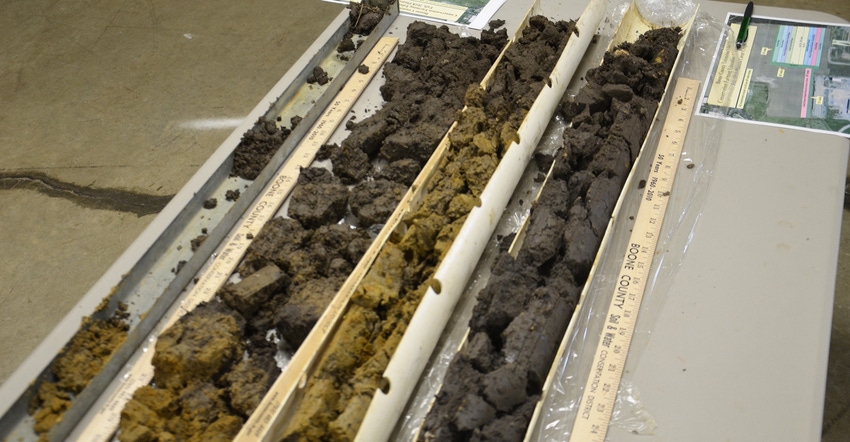
Three soil monoliths on the table told a story. Mike Wigginton took them from the small field where the Boone County, Ind., conservation partners have conducted cover crop demonstrations since 2015.
Wigginton, an area resource soil scientist with the Natural Resources Conservation Service, hoped the story would be that cover crops were leaving roots deep in the soil. While he found some roots, along with evidence of earthworms, he didn’t find as many roots as expected.
Monoliths are trays filled with soil from the surface to about 3 feet deep, made from a round core of soil pulled with a hydraulic probe and split in half. It’s a snapshot of the soil profile from top to bottom, Wigginton explains.
What the three monoliths indicated was that even though there wasn’t lots of slope, soil types and internal drainage varied. One soil was dark gray in the subsoil, another had brown and gray soil mixed, and the third had dark gray subsoil followed by browner subsoil mixed with gray. The grayer the subsoil, the greater the drainage problems.
Digging your own pit or looking at monoliths helps confirm what soils you have, Wigginton says. That can help you make decisions about tiling, and about which cover crops might help improve soil structure and offer the most benefits.
About the Author(s)
You May Also Like




